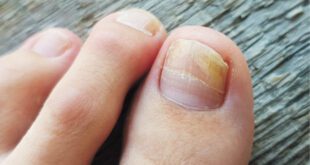 Maintaining optimal bladder health is crucial for women, yet issues like overactive bladder (OAB) and urinary incontinence can significantly impact daily life. While medications are often the first line of treatment, some women may find them ineffective or intolerable due to side effects. In such cases, exploring alternative therapies becomes imperative. From PTNS stimulation to Botox injections and InterStim therapy, a range of advanced options offers hope and relief for those seeking to regain control over their bladder function.
Maintaining optimal bladder health is crucial for women, yet issues like overactive bladder (OAB) and urinary incontinence can significantly impact daily life. While medications are often the first line of treatment, some women may find them ineffective or intolerable due to side effects. In such cases, exploring alternative therapies becomes imperative. From PTNS stimulation to Botox injections and InterStim therapy, a range of advanced options offers hope and relief for those seeking to regain control over their bladder function.
Medication: The Initial Approach
For many women, the journey towards managing bladder issues begins with medication. Anticholinergic drugs, such as oxybutynin and tolterodine, are commonly prescribed to alleviate symptoms of OAB by relaxing bladder muscles and reducing urgency. However, while effective for some, others may experience side effects like dry mouth, constipation, or blurred vision. Additionally, these medications may not provide adequate relief for everyone, prompting the need for alternative strategies.
PTNS Stimulation: A Non-Invasive Solution
Percutaneous tibial nerve stimulation (PTNS) offers a non-invasive approach to treating OAB and urinary incontinence. During PTNS therapy, a healthcare provider inserts a thin needle near the ankle, through which electrical impulses are delivered to the tibial nerve. These impulses travel to the sacral nerves, which control bladder function, helping to regulate its activity.
The procedure is typically performed in-office and requires minimal discomfort. Patients may undergo multiple sessions over several weeks to achieve optimal results. PTNS is well-tolerated and has shown promising outcomes in reducing urinary frequency, urgency, and leakage in women who have not responded to or cannot tolerate medication.
Botox: Targeted Relief
Botulinum toxin injections, commonly known as Botox, have revolutionized the treatment of overactive bladder in women. When medications and conservative measures fail to provide relief, Botox offers a targeted solution by inhibiting the release of acetylcholine, a neurotransmitter involved in muscle contractions.
During the procedure, Botox is injected directly into the bladder muscle using a cystoscope. This temporarily relaxes the bladder, reducing urgency and incontinence episodes. While the treatment is effective, its effects are not permanent and may last for several months before requiring repeat injections.
Botox injections are generally well-tolerated, though some women may experience temporary urinary retention or urinary tract infections. Nonetheless, for those seeking long-lasting relief from OAB symptoms, Botox represents a valuable therapeutic option.
InterStim Therapy: Precision Neuromodulation
For women with severe OAB or urinary incontinence resistant to other treatments, sacral neuromodulation with InterStim therapy provides a highly effective solution. This minimally invasive procedure involves implanting a small device, similar to a pacemaker, near the sacral nerves, which regulate bladder function.
InterStim therapy works by delivering mild electrical pulses to the sacral nerves, modulating their activity and restoring normal bladder function. The device can be adjusted externally to optimize symptom control without the need for additional surgery.
While InterStim therapy offers significant benefits, including improved quality of life and reduced reliance on medications, it is not suitable for everyone. Candidates must undergo thorough evaluation to determine their eligibility for the procedure.
Female bladder health is a multifaceted issue that demands personalized treatment approaches. While medications serve as the first line of defense, alternative therapies like PTNS stimulation, Botox injections, and InterStim therapy offer hope for those who do not respond to or cannot tolerate conventional treatments.
By embracing a comprehensive approach to bladder management, women can regain control over their urinary function and enjoy a better quality of life. Consulting with a healthcare provider experienced in female urology can help individuals navigate the array of treatment options and find the solution that best suits their needs. With advancements in technology and a growing understanding of bladder physiology, the future of female bladder health is brighter than ever before.
352-775-6899
www.lakesumterurology.com
808 Highway 466, Lady Lake, FL 32159
 Central Florida Health and Wellness Magazine Health and Wellness Articles of the Villages
Central Florida Health and Wellness Magazine Health and Wellness Articles of the Villages



